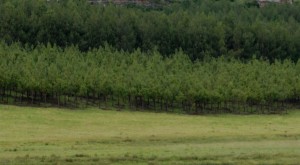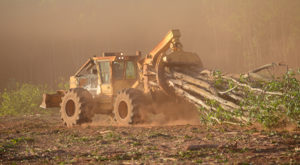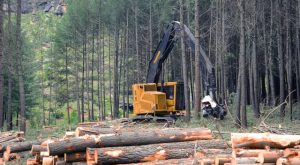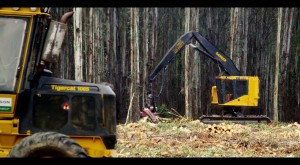– Paul Iarocci
Many will remember PG Bison as one of the Tigercat customers featured in the 2012 film ‘20’ that coincided with Tigercat’s 20th anniversary. PG Bison is a large, vertically integrated South African company owned by KAP Industrial Holdings, part of Steinhoff International. It manufactures and markets timber, poles, wood-based panel products, decorative laminates and solid surfacing materials.
PG Bison purchased four Tigercat track harvester/ forwarder/loader systems in 2008 to feed a newly constructed state-of-the-art particle board plant consuming 1 500 tonnes of fibre per day, and delivered to the mill in three metre lengths.
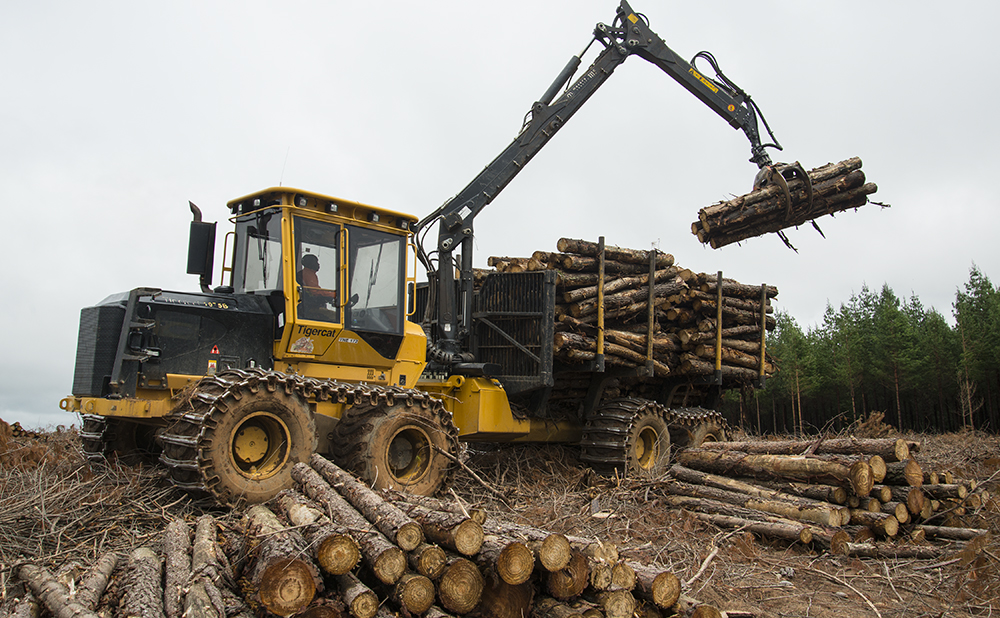
PG Bison’s latest forwarder, a Tigercat 1075B, has racked up 4,900 hours in its first fourteen months.
International sales representative Gary Olsen, who resides in South Africa and participated in the original purchase process, relates that trying to market and sell longevity to a customer as an expected feature of a purpose-built harvesting machine is easier said than done. “It involves so many assumptions, variables and unknowns that could easily prove a salesman’s claims untrue in a short space of time. However, being able to visit machines years after the sale where the talk has been walked is a rewarding experience and one that gives Tigercat, the dealers and their customers confidence that machines will last as long as Tigercat says they will.”
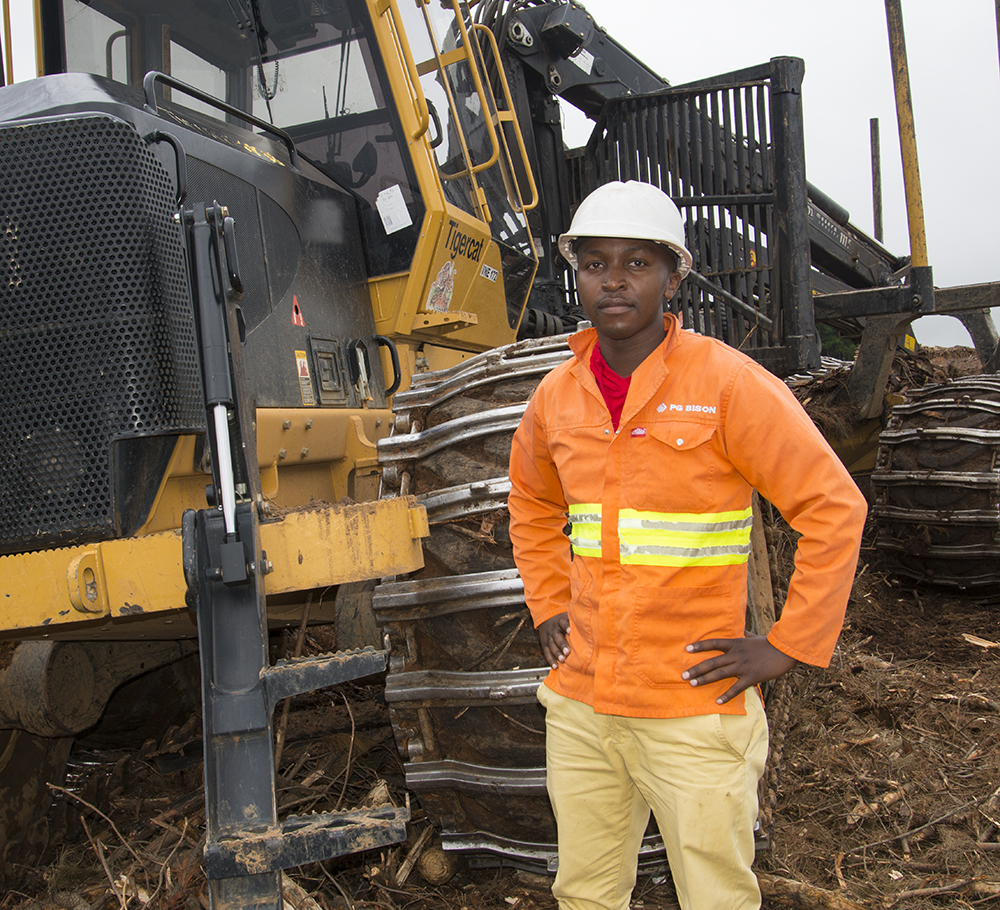
Forwarder operator, Mbhuti Stephen Ndovu, is one of the original five. He has been with PG Bison since the harvesting operations began in 2008.
These original machines, eight years later, have acquired upwards of 20 000 hours apiece. One of the original 1065 forwarders has been replaced with a new, higher capacity 1075B. Otherwise the company is looking to refurbish the existing fleet and run the machines substantially longer as they continue to cycle new machines into the mix and adjust the systems to meet changing requirements dictated by market dynamics and other factors.
Harvesting manager Mark Wells explains, “We bought a new 1075B forwarder because we wanted the biggest bunk because the wood is getting lighter. We also want to start blending new machines in with the old so we won’t have to replace them all at once.”
PG Bison has also changed its focus since 2012. Envisioning a potential shortage of saw timber in South Africa, the company is now emphasizing thinning for saw logs and is cutting less pulp out of its own plantations to ensure that the harvest stays at sustainable levels. In fact, they are trying to get 60-70 percent saw log production out of the pulpwood compartments and thinning operations.
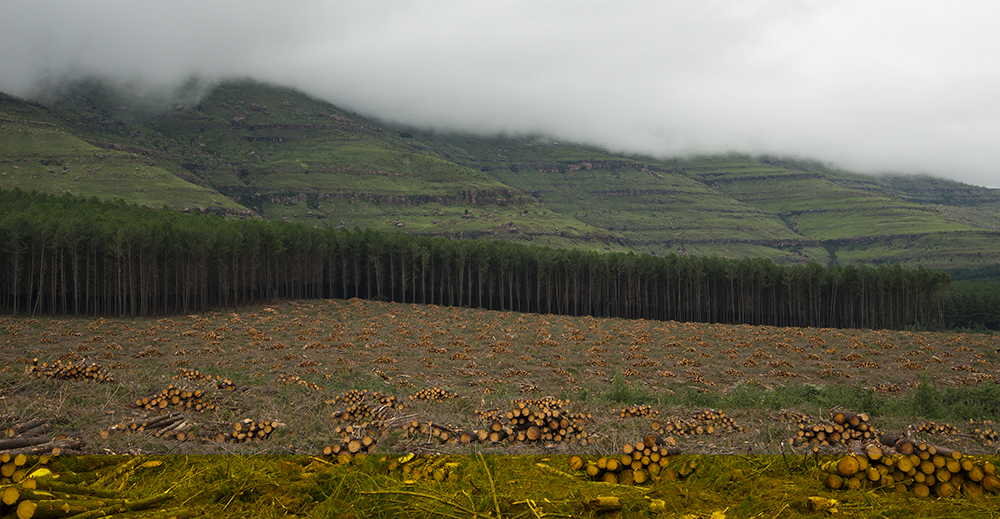
Picture perfect. A recently harvested compartment. Harvester operators undergo training every seven months focusing on felling technique and felling patterns.
In order to accomplish this – while still supplying the mill with adequate product – PG Bison has developed agreements with other producers to trade saw logs for pulp fibre. Outbound finished goods are distributed to various cities around the country and the return journey to Ugie is filled with either logs or wood chips making these trade agreements economically viable.
Aging iron, more experienced workforce
Although usage of the machines has fluctuated over the years, the current activity for the original (20 000 hour) forwarders is 350 hours per month with 85 percent machine availability. Operator turnover has been stubbornly high and the new operator training has been hard on the machines. However, five of the 25 original core of operators still remain with the company. A major rehire and training process that occurred four years ago has yielded an additional seven for a total of twelve experienced operators – all from the local communities in the vicinity of Ugie and Maclear. Nine of these operators cycle through the older machines.
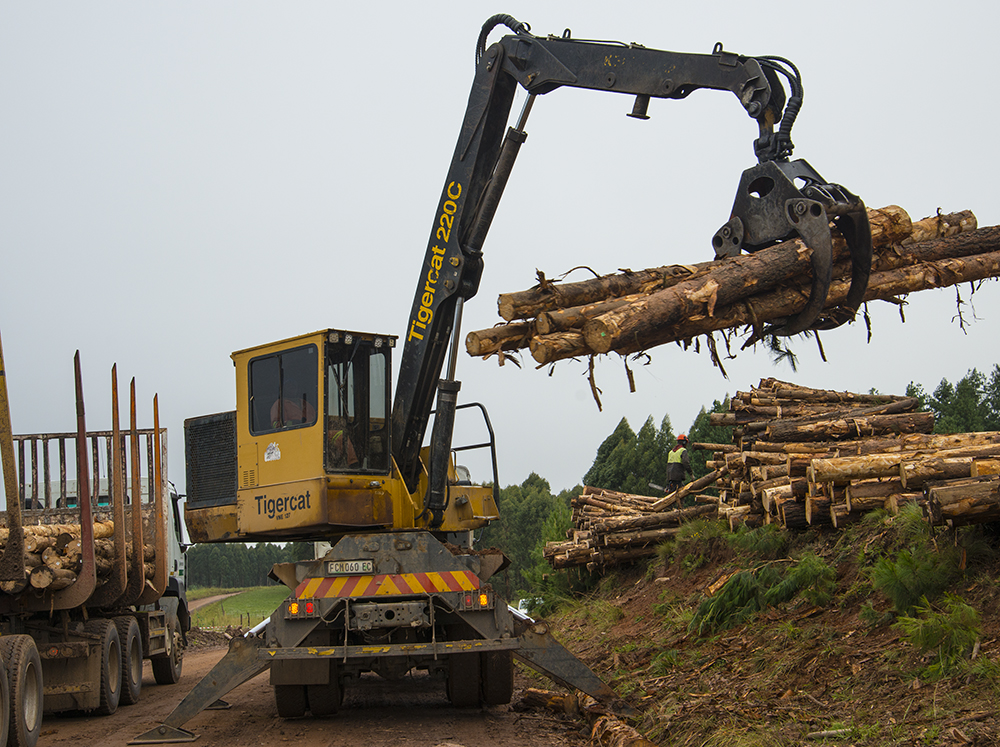
PG Bison uses truck-mounted Tigercat 220 loaders to load the shortwood.
The new 1075B forwarder is triple shifted and run by three of the best operators. One of them is Mbhuti Stephen Ndovu, one of the original five. He likes the stability of the bigger machine over the 1065 that he ran previously. Stephen and the other two operators have put 4 900 hours on the 1075B in fourteen months. Despite running virtually 24 hours a day, the machine looks brilliant.
PG Bison has developed a very detailed incentive system. Operators are paid for production over and above a base rate of productivity. However, machine availability is also an incentive. For example, the 1075B must maintain over 90 percent availability in order for the operators to qualify for the extra production bonus. So the production cannot be achieved at the expense of machine damage or unnecessary wear and tear.
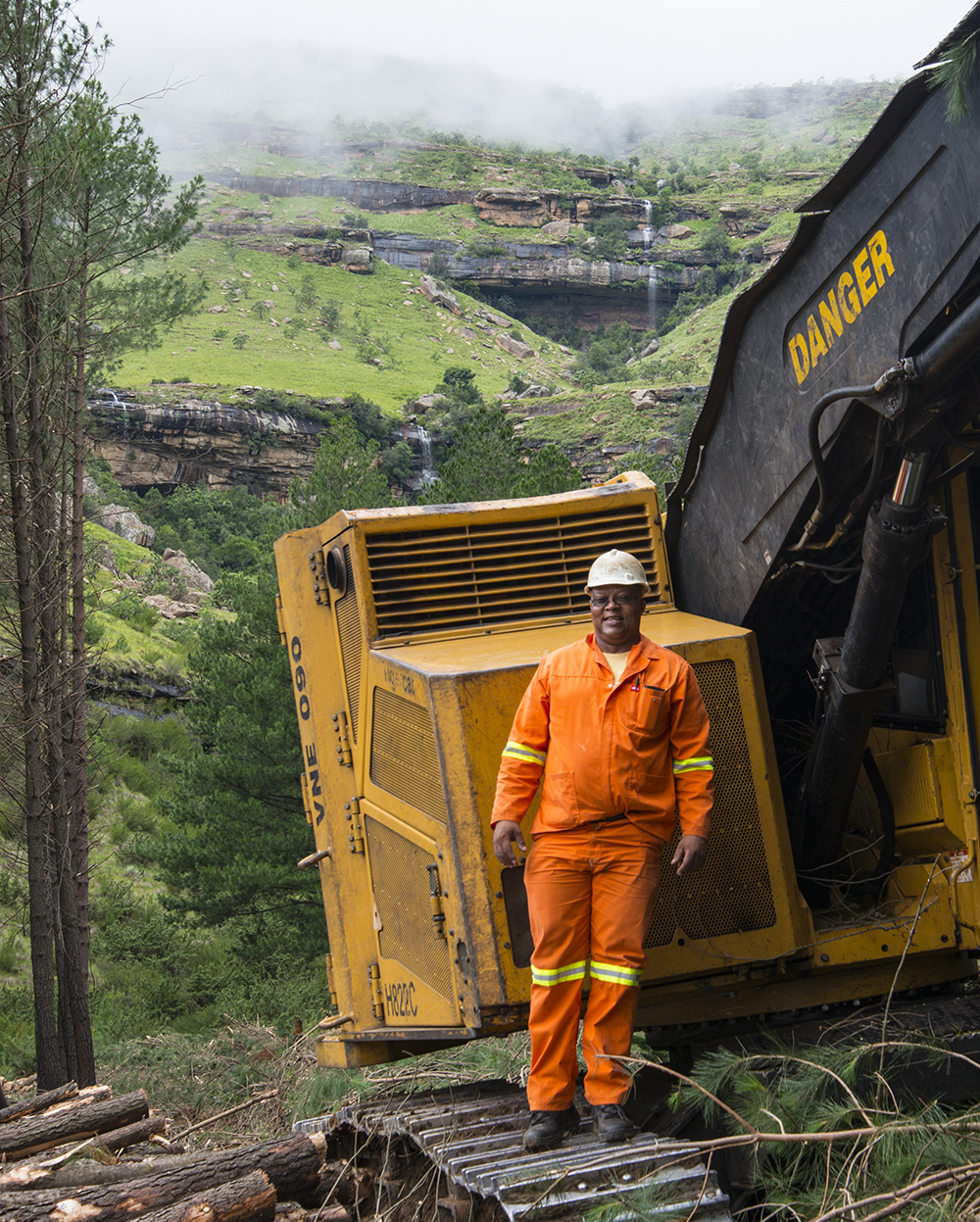
Another original five operator is Moos Mackenzie. He is achieving 37 cubic metres per hour in pulp thinning compartments.
Another original five operator is Moos Mackenzie. He is running an H822C harvester with 18,000 hours. In thinning applications, he is achieving 37 m³ per hour in pulp compartments with average piece size of 0,19 m³. The machine is on its second head. The tracks, sprockets and track rollers have been replaced, the engine has been overhauled and the oil cooler and harvester pump have been changed. However, the machine is structurally sound with no boom cracks, despite the high cycle application, and generally the machine has been very reliable with current mechanical availability (factoring in the head and machine) at a respectable 80%.
Harvester operators undergo training every seven months that focuses on felling techniques and patterns. There is also a strong emphasis on educating operators on the dangers of chain shot and how to minimize the risk of chain shot accidents. In addition, life skills training and a wide range of counselling services are offered for all employees.
South African Tigercat dealer, AfrEquip, has a permanent technician stationed in this remote part of Eastern Cape. He services PG Bison as well as one other neighbouring harvesting company that is also running Tigercat equipment. Similar to PG Bison’s issues with employee turnover, AfrEquip has also had its challenges in keeping good technicians on site in the remote town of Ugie. Current AfrEquip technical manager John Barbour first cut his Tigercat teeth as the on-site technician and eight years later is still helping to oversee the operation. Add in Jeff Cave, southern African Tigercat factory product support representative, and one realizes that the PG Bison success story has as much to do with the people as with the machines.







